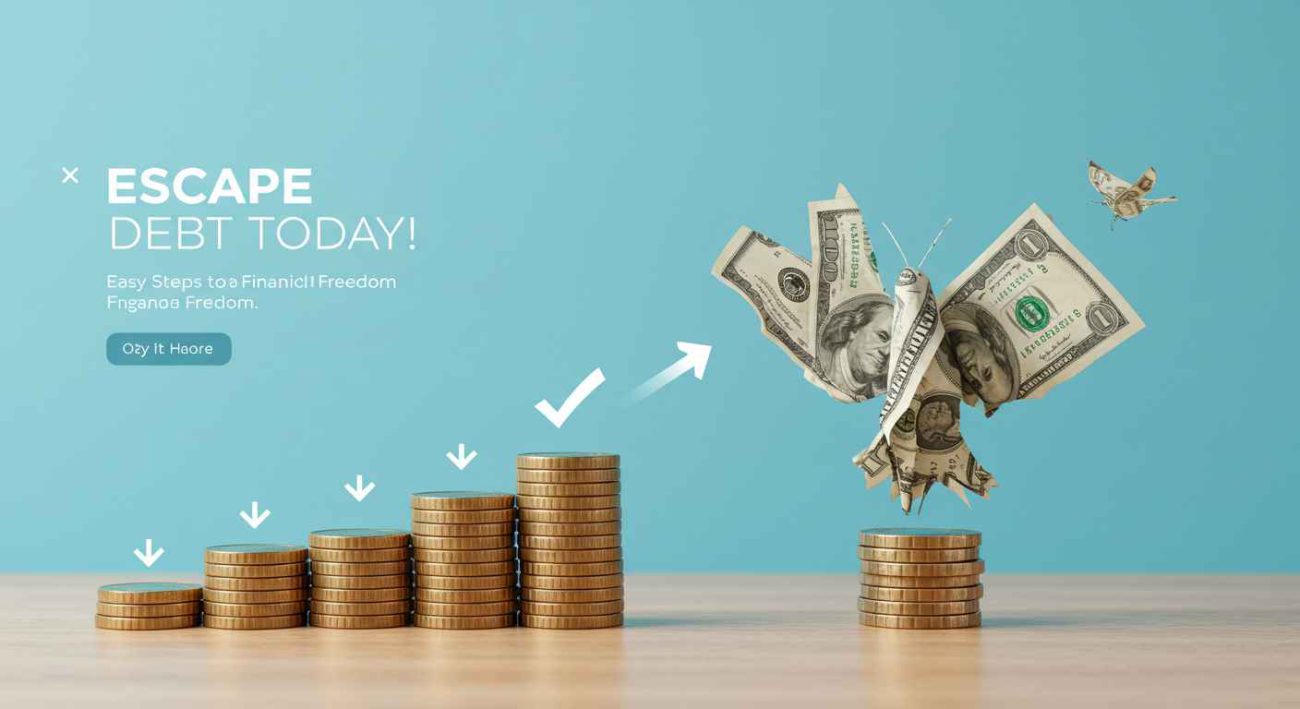You open your bank statement, and instead of a sinking feeling, you’re greeted with a sense of calm. No looming credit card balances, no nagging loan payments—just freedom. For many, debt feels like a heavy backpack, weighing down every step. But what if you could lighten that load, step by step, and walk toward a future where your money works for you, not against you? That’s what this article is about: breaking down the journey to becoming debt-free into simple, actionable steps. Whether you’re drowning in student loans or juggling credit card bills, these strategies will help you take control and build a brighter financial future. Ready to start? Let’s dive in and explore how you can make this dream a reality.
Face the Numbers Head-On
The first step to tackling debt is knowing exactly what you’re dealing with. It’s tempting to avoid looking at your balances, but clarity is your greatest ally. Pull up all your statements—credit cards, student loans, car payments, and anything else. Write down the total amount owed, interest rates, and minimum payments. This snapshot might feel daunting, but it’s like mapping out a hike: you need to know the terrain before you can navigate it.
Try using a spreadsheet or a budgeting app like YNAB (You Need A Budget) or Mint to organize your debts. Seeing everything in one place empowers you to make informed decisions. Ask yourself: which debts have the highest interest rates? Those are often the ones to prioritize. Facing the numbers isn’t about judgment—it’s about taking charge.
Choose Your Debt Payoff Strategy
Not all debts are created equal, and neither are the ways to tackle them. Two popular methods stand out: the Debt Snowball and the Debt Avalanche. The Snowball method, championed by financial experts like Dave Ramsey, focuses on paying off your smallest debt first while making minimum payments on others. The quick wins boost your motivation, like crossing off items on a to-do list. The Avalanche method, on the other hand, targets the debt with the highest interest rate first, saving you money over time.
Which feels right for you? If you thrive on quick victories, go with the Snowball. If you’re driven by efficiency, the Avalanche might be your path. Either way, pick one and stick with it. Consistency is key, and seeing progress—whether it’s a paid-off credit card or a shrinking loan balance—will keep you moving forward.
Build a Lean Budget
A budget is your roadmap to debt freedom. It’s not about deprivation; it’s about directing your money toward what matters most. Start by tracking your income and expenses for a month. Where’s your money going? Coffee runs, subscriptions, or impulse buys? Identify areas where you can cut back without feeling like you’re sacrificing joy.
Try the 50/30/20 rule: allocate 50% of your income to needs (housing, utilities), 30% to wants (dining out, hobbies), and 20% to savings and debt repayment. If debt is your priority, funnel more into that 20% bucket. Apps like EveryDollar can simplify this process, helping you stay on track. A lean budget doesn’t mean giving up fun—it means making intentional choices so your money aligns with your goals.
Boost Your Income
Sometimes, cutting expenses isn’t enough. Increasing your income can accelerate your debt payoff like a tailwind on a bike ride. Consider side hustles that fit your skills and schedule. Freelancing, tutoring, or selling unused items online (think eBay or Poshmark) can bring in extra cash. Even a few hundred dollars a month can make a dent in your debt.
If a side gig isn’t feasible, explore opportunities at your current job. Could you negotiate a raise or take on overtime? Small increases add up. For example, an extra $200 a month applied to a $5,000 credit card balance at 18% interest could shave months off your repayment timeline. Every bit of extra income is a step closer to freedom.
Negotiate with Creditors
Did you know you can sometimes negotiate your debt? Creditors want to get paid, and many are willing to work with you. Call your credit card companies or lenders and ask about lowering your interest rate or setting up a more manageable payment plan. Be polite but firm, and explain your commitment to paying off the debt.
If you’re struggling, inquire about hardship programs—some lenders offer temporary relief, like reduced payments or paused interest. If you’re dealing with medical debt, ask for an itemized bill; errors are common, and you might reduce the total. Negotiating isn’t a guaranteed win, but it’s a powerful tool that could save you hundreds or even thousands.
Automate and Stay Disciplined
Automation is like setting your financial GPS—it keeps you on course without constant effort. Set up automatic payments for at least the minimum on all your debts to avoid late fees and credit score dings. Then, schedule extra payments toward your priority debt (from your Snowball or Avalanche plan). This ensures consistency, even on busy months.
Discipline is the other half of the equation. Tempted to splurge on a new gadget? Pause and ask: does this bring me closer to my debt-free goal? Small sacrifices now—like skipping takeout a few times a month—can lead to big rewards later. Celebrate progress instead, like treating yourself to a low-cost reward when you pay off a debt.
Build an Emergency Fund (Even a Small One)
Paying off debt is crucial, but so is avoiding new debt. An emergency fund acts like a safety net, catching you before you fall back into borrowing. Start small—aim for $500 to $1,000 in a separate savings account. This can cover unexpected expenses like car repairs or medical bills without derailing your debt payoff plan.
Sound impossible while paying off debt? It’s not. Even $25 a month adds up. Stash this fund in a high-yield savings account (many online banks offer 4-5% interest) to make your money work harder. Knowing you have a buffer brings peace of mind, making the debt-free journey feel less like a tightrope walk.
Stay Motivated with Small Wins
The road to debt freedom can feel long, so celebrate the milestones along the way. Paid off a credit card? Do a little dance or treat yourself to a favorite coffee. Reduced your total debt by 10%? Share the win with a friend or journal about how it feels. These moments of joy keep you motivated, like rest stops on a long drive.
Visual reminders help, too. Create a debt payoff chart and color in your progress, or use an app like Debt Payoff Planner to track your journey. Seeing the numbers shrink is incredibly satisfying. What’s your next milestone? Keep it in sight to stay focused.
Reflect and Keep Going
Becoming debt-free isn’t a one-size-fits-all process. Some months, you might throw extra cash at your debt; others, you might just cover the minimums. That’s okay—progress is progress. The key is to stay intentional and keep moving forward, even when life throws curveballs.
Take a moment to reflect: how will being debt-free change your life? Maybe it’s the freedom to travel, start a business, or simply sleep better at night. Hold onto that vision. Experiment with these steps—tweak your budget, try a new side hustle, or renegotiate a bill. Every choice you make is a step toward a lighter, brighter future. So, what’s your next move? Start today, and watch how small steps lead to big freedom.

